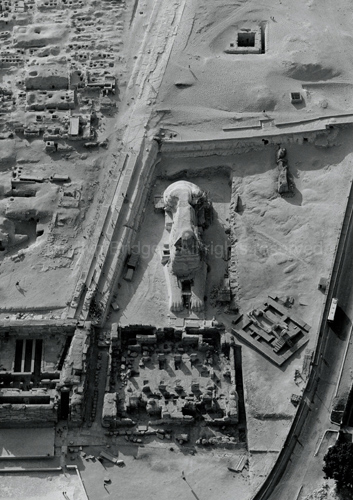|
|
|||
The Great Sphinx, Giza, 1992. The Great Sphinx, much weathered by time and sand, is undergoing restoration. Given its fragile nature, this monument’s survival may be attributed to its burial under desert sands for much of its existence. Built during the 4th Dynasty (2575 – 2465 BC) out of rock left over from the quarrying operations of the Pyramid of Khephren, it is nearly 240 feet long and 65 feet high. Sphinxes are composite animals, with a lion’s body and the head of a falcon, ram, or human. The Great Sphinx is a lion couchant with a human head, possibly representing King Khephren. On the head is the royal headdress. In the foreground, at the feet of the Sphinx, is the so-called Sphinx temple, which, apparently, was never finished. It differs from most buildings in the necropolis in that it does not serve a funerary function, and may have been dedicated to the sun god, Re’. To its immediate right is the partially restored, small temple of Amenophis II, which dates to the 18th Dynasty. Left of the Sphinx temple is the valley temple of Khephren, which is connected by a causeway (just left of the Sphinx) to the Pyramid of Khephren. Upper left is an area of numerous mastabas and rock-cut tombs. Behind the Sphinx, north of the causeway (upper center), can be seen the so-called Campbell’s tomb, a huge tomb shaft of the 26th Dynasty.
|

